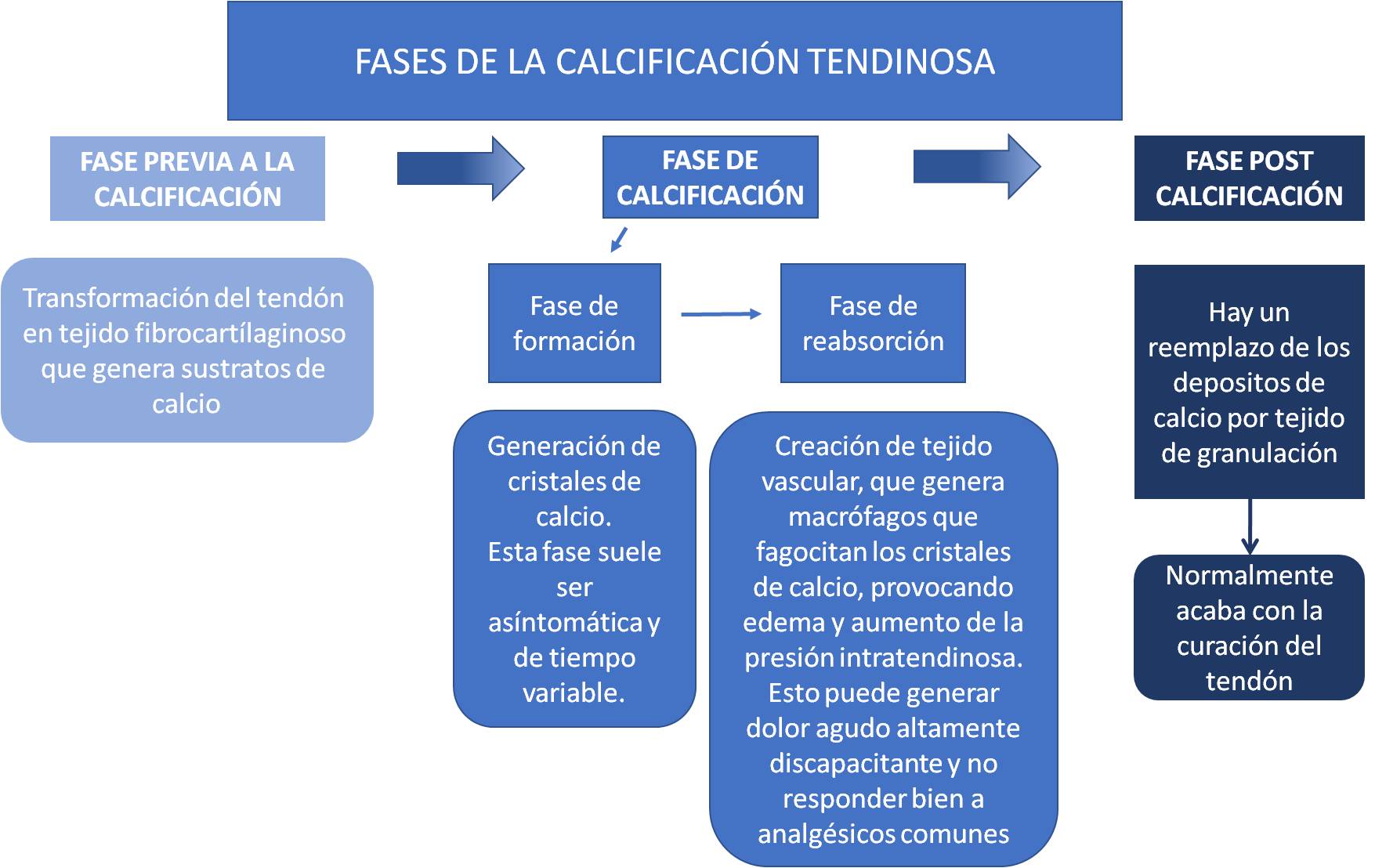La patogenia de la RCCT se puede dividir en tres etapas, como informaron Uhthoff et al.:
ETAPA PRE-CALCIFICACIÓN
Con transformación tendinosa en tejido fibrocartilaginoso que actúa como sustrato para el depósito de calcio.
ESTADIO CALCIFICADO
Con depósito real de calcio. Está compuesto por la fase formativa y reabsorbente.
Fase Formativa: Se caracteriza por el depósito de cristales de calcio en el tendón, que está mediado por los condrocitos de la metaplasia fibrocartilaginosa.
Fase de Reabsorción: Comienza después de un período de tiempo variable de curso silencioso de la enfermedad en el que se desarrolla un tejido vascular en el área afectada con la posterior fagocitosis de los macrófagos del depósito de calcio. Esta fase se caracteriza por edema y aumento de la presión intratendinosa con posible extravasación de cristales de calcio en la bolsa SASD. La fase de resorción generalmente se asocia con el desarrollo de dolor agudo que puede ser muy incapacitante y no responde a los analgésicos comunes.
FASE POST-CALCIFICACIÓN:
Con remodelado del tejido tendinoso por fibroblastos tras depósito de calcio, que puede durar varios meses. La etapa post-calcificación y la fase de reabsorción de la etapa calcificada parecen ocurrir simultáneamente, con la sustitución de los depósitos de calcio por tejido de granulación. Este proceso generalmente termina con la curación completa del tendón afectado.
 Pathogenesis of RCCT can be divided into three stages, as reported by Uhthoff et al. :
Pathogenesis of RCCT can be divided into three stages, as reported by Uhthoff et al. :
- Precalcific stage, with tendon transformation in fibrocartilaginous tissue which acts as a substrate for calcium deposition.
- Calcific stage, with real calcium deposition. It is composed of the formative and resorptive phase. The first is characterized by calcium crystals deposition into the tendon, which is mediated by the chondrocytes of the fibrocartilaginous metaplasia. The resorptive phase begins after a variable time period of silent course of disease in which vascular weaving develops in the affected area with subsequent macrophages phagocytosis of the calcium deposit. This phase is characterized by edema and increased intratendinous pressure with possible extravasation of calcium crystals in the SASD bursa. The resorptive phase is usually associated with the development of acute pain that can be highly disabling and unresponsive to common analgesics.
- Postcalcific stage: with tendon tissue remodelling by fibroblasts after calcium deposition, which can last several months. The postcalcific stage and the resorptive phase of the calcific stage seem to occur simultaneously, with the replacement of calcium deposits by granulation tissue. This process usually ends with complete healing of the involved tendon.
SI tienes cualquier duda o sospecha de que puede ocurrirte esto, no dudes en pasarte por nuestra clínica.
Síguenos también en las redes sociales.

Comentarios recientes